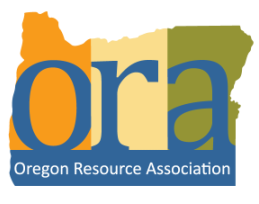
About Us
Oregon Resource Association (ORA) is the professional membership association for community providers of services to individuals with disabilities. As the hub of the disability community, we provide a collaborative platform that connects and empowers our members through learning, advocacy, resources and innovation. We are shaped by our Mission, drawn toward our Vision and guided by our Values.
Who We Are
For over 55 years, ORA has been the statewide voice of community service providers, successfully advocating for people with disabilities in ways that truly make a difference in their lives. Today, as the networking and information hub for organizations that support Oregonians with disabilities, ORA offers its members education and training, events and networking opportunities, consultation services, and professional assistance.
ORA is the voice of policy and legislative advocacy as it relates to services for people with intellectual, developmental and other disabilities. The interests of our members are represented at the legislature through ORA’s lobbyist, Amanda Dalton (Dalton Advocacy). We also work closely with Oregon policy makers to protect the rights of individuals with disabilities, ensuring that service providers are given the resources they need to do their jobs not only safely, but with excellence.
Our goal is for people with disabilities to live the lives they choose, with opportunities to live full, inclusive lives as valued members of their communities. In a time where services for people with disabilities continue to evolve rapidly, and threats to their funding appear at every turn, ORA is dedicated to helping design and share new ideas and innovative tools for bettering the lives of people with disabilities and those who support them.
